By: Emily Sheng
Edited By: Tianna Mair
Designed By: Cece
Published By: Maryam Khan
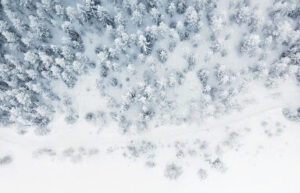
(Photo by Gabriel Alenius on Unsplash)
Whether your memories of snow consist of that magical feeling of snowflakes turning your eyelashes white while skating along a winding river or the biting pain of frigid air hitting your face at 40 km/h while you shovel your driveway, every Canadian has had an encounter with the beast that is winter. While many of us may wish for the warmth of the sun as soon as December arrives, snow has many benefits not only for us, but the rest of the world as well.
What is snow?
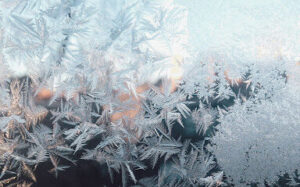
(Photo by Kelly Sikkema on Unsplash)
Snow is made up of water crystals that form in the clouds during cold temperatures of 0 ℃, the freezing point of water. Usually when undergoing temperature changes, elements go from gas to liquid to solid. However, in this special case, water vapour in the air condenses directly into a solid, forming the ice crystal. More water vapour will freeze on the outside, creating the distinctive arms of a snowflake. The shape that a snowflake takes on depends on how the water molecules in the crystal orient themselves during crystallization, which varies depending on the temperature and atmospheric conditions it was formed at. This water crystal will slowly fall from the sky as snow.
Geographically, the North Hemisphere receives more snow than the Southern Hemisphere. Areas like Canada, north of Russia, Europe, China, and bits of the US, are consistently blanketed with snow during the winters. Because snow is so prominent for us Canadians, learning about its role in our lives is important.
Reflective Properties
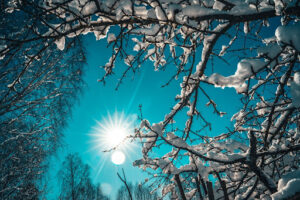
(Photo by Raimond Klavins on Unsplash)
Fresh snow is white, and so it is very reflective, bouncing 80 to 90 percent of sunlight back into space instead of allowing the darker ground to absorb it, and therefore warming up the planet. This means that seasonal snow plays a big role in controlling the temperature of the planet. When snow falls, the surrounding temperature drops, and vice versa. A major consequence of the receding snow cover in the Arctic is its contribution to the global warming effect
Water Reservoir
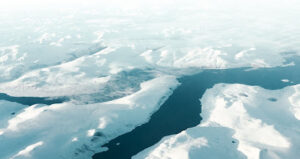
(Photo by Michael Shannon on Unsplash)
Because snow is made of water, many places get the majority of their water supply from snow. When it melts, it increases the water availability, filling up lakes and rivers, which is important for water sources and hydroelectric power. Snow droughts, where an area receives unusually low amounts of snow, can cause irrigation and fishing problems, as well as wildfires.
Wildlife

(Photo by Danielle Barnes on Unsplash)
Snow is also very important for certain ecosystems and the animals that live within them. Animals like the snowshoe hare have white fur to camouflage, therefore snow is crucial for their survival. Other animals that live in snowy climates have adapted to the snow, acquiring thicker coats to retain thermal energy, or having widespread feet to be able to traverse more easily across the snow. Snow also allows small critters such as shrews and mice to tunnel through the snow to find food during the wintertime.
Thermal Properties
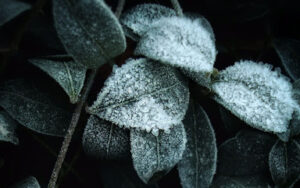
(Photo by Eugene Golovesov on Unsplash)
Snow acts like an insulator, locking in moisture and heat from the ground. Because it has many air pockets in its structure, it regulates the temperature, insulating the plants and critters that live underneath, and almost acting like a shield. It prevents roots and small plants from being too affected from extreme temperature changes. If you’ve ever been in an igloo, you can really see the effects of snow’s thermal properties. It might be super cold outside with frigid winds, but the temperature inside the igloo is only a few degrees below zero.
Snow’s versatility contributes to many aspects of our world. Without it, we would be toast! Perhaps you can shovel your driveway on a Monday morning with a frigid wind hitting your face at 40 km/h with more enthusiasm now that you understand snow’s significance! Or not…
References
Albedo and reflective properties of various types of snow and water | AMAP. (2012, December 20). Arctic Monitoring and Assessment Programme. Retrieved November 26, 2022, from https://www.amap.no/documents/doc/albedo-and-reflective-propertis-of-various-types-of-snow-and-water/971
Brown, R. (2011, November 20). Snow. The Canadian Encyclopedia. Retrieved November 26, 2022, from https://www.thecanadianencyclopedia.ca/en/article/snow
How do snowflakes form? Get the science behind snow. (2016, December 19). National Oceanic and Atmospheric Administration. Retrieved November 26, 2022, from https://www.noaa.gov/stories/how-do-snowflakes-form-science-behind-snow
Ice & Snow | NESDIS. (n.d.). noaa/nesdis. Retrieved November 26, 2022, from https://www.nesdis.noaa.gov/our-environment/ice-snow
The Insulation Properties of Snow. (n.d.). Actforlibraries.org. Retrieved November 26, 2022, from http://www.actforlibraries.org/the-insulation-properties-of-snow/
Snow. (n.d.). Geography. Retrieved November 26, 2022, from https://geography.name/snow/
Snow Drought. (n.d.). Drought.gov. Retrieved November 26, 2022, from https://www.drought.gov/what-is-drought/snow-drought
Veglahn, J. (2018, February 14). The Importance of Snow – Milwaukee. Urban Ecology Center. Retrieved November 26, 2022, from https://urbanecologycenter.org/blog/the-importance-of-snow.html
Why Snow Matters. (n.d.). National Snow and Ice Data Center. Retrieved November 26, 2022, from https://nsidc.org/learn/parts-cryosphere/snow/why-snow-matters

